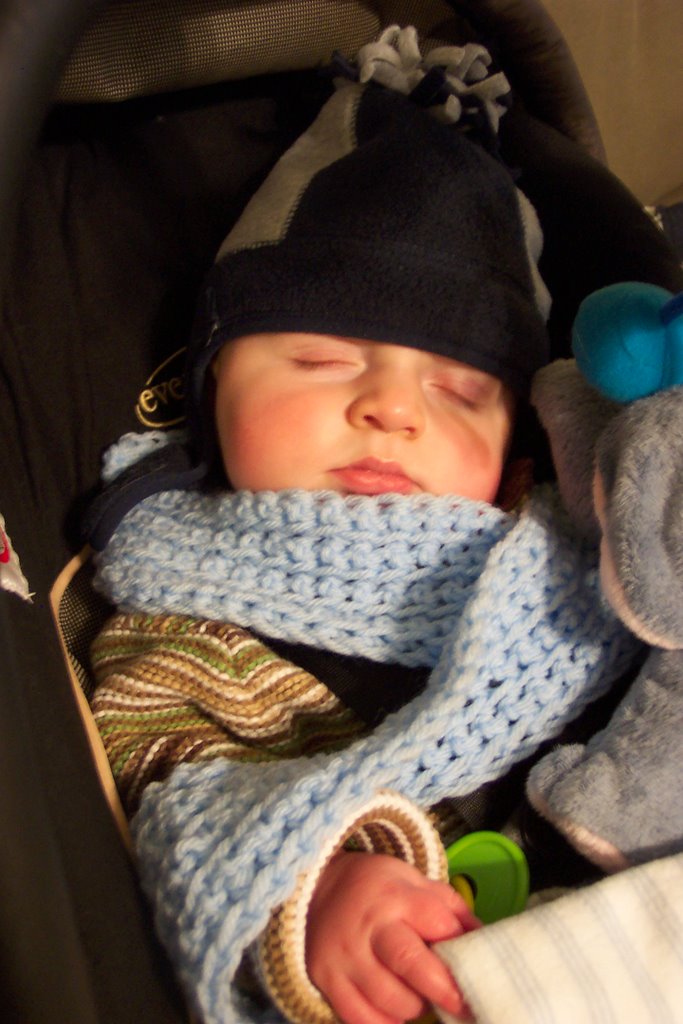So I've been doing a lot of research. I read a book recently called The Late Talker which outlined several possible reasons why children have speech delays. This book focused on apraxia, a condition where a person knows what he or she wants to say but can't get it out. It is a muscle condition where the brain is unable to translate a desired message into the physical response needed to produce words, sounds or motions. We related to some of the stuff in this book, but then moved on to Lynn Hamilton's Facing Autism.
The author's son has a lot of similarities to mine. But what I appreciate about this book is her clear outlining of diagnostic tools for autism. I am disappointed to say that neither of our therapists, our pediatrician or anyone else ever asked us anything related to these items when trying to figure out what is wrong with Lewis. We heard things like "Does he make eye contact?" or "Does he show affection?" which could relate to autistic tendencies, but are not central to the issue. We don't know for sure if our son is autistic, but because of these tools, we should have a diagnosis in the near future through an intense level evaluation in Louisville.
In the meantime, I wanted to document some of this stuff for our own use, but also to let others out there know what to really look for in your child or other kids you are around so that we can really be helpful to one another and not give false hope.
One very helpful tool is the CHAT (Checklist for Autism in Toddlers) that was developed by a group of British doctors and can be used on children as young as 18 months. The key points of the test are A-5, A-7, B-ii, B-iii, and B-iv (marked by * below). If a child fails ALL the key points, there is an extremely good probability of autism.
Section A: Ask parent
1. Does your child enjoy being swung, bounced on your knee, etc.?
2. Does your child take an interest in other children?
3. Does your child like climbing on things, such as stairs?
4. Does your child enjoy playing peek-a-boo or hide-and-seek?
5. Does your child ever PRETEND, for example, to make a cup of tea using a toy cup and teapot, or pretend other things?*
6. Does your child ever use his/her index finger to point, to ASK for something?
7. Does your child ever use his/her index finger to point, to indicate INTEREST in something?*
8. Can your child play properly with small toys (e.g. cars or blocks) without just mouthing, fiddling, or dropping them?
9. Does your child ever bring objects over to you (parent) to SHOW you something?
Section B: GP (Gen. Practitioner) or other health personnel's observation:
i. During the appointment, has the child made eye contact with you?
ii. Get the child's attention, then point across the room at an interesting object and say, "Oh look! There's a (name of toy)!" Watch the child's face. Does the child look across to see what you are pointing at?*
iii. Get the child's attention, then give the child a miniature toy cup and teapot and say, "Can you make a cup of tea?" Does the child pretend to pour out tea, drink it, etc.?*
iv. Say to the child, "Where's the light?" or "Show me the light." Does the child POINT with his/her index finger at the light?*
v. Can the child build a tower of blocks? (If so, how many?)
Another tool in Hamilton's book shows that impairments in social interaction and communication, and repetitive patterns of behavior are the hallmarks of autism in children. If you get online and look around you may find a million different lists of symptoms for this disorder and it can be really confusing. Hopefully these tools will help calm fears of some and drive others to get much needed help.
Ultimately I am learning that as a mom, I have the inside track on my own child. If my gut is telling me there is a problem, there probably is something to it. We all want to believe that doctors and therapists know more than we do, but in seeing a child for a few minutes every few months or even an hour a week, the view of these outsiders is extremely limited compared to what you and I see every day with our kids. Most of the time there is really nothing to be worried about. The problem is that issues will go undetected if we are not vigilant to seek out answers that may be hard to hear. The good news is that the sooner something is discovered the sooner the child can get the help he or she needs. If it turns out to be nothing, great! But we should not be satisfied until we know for sure.


No comments:
Post a Comment